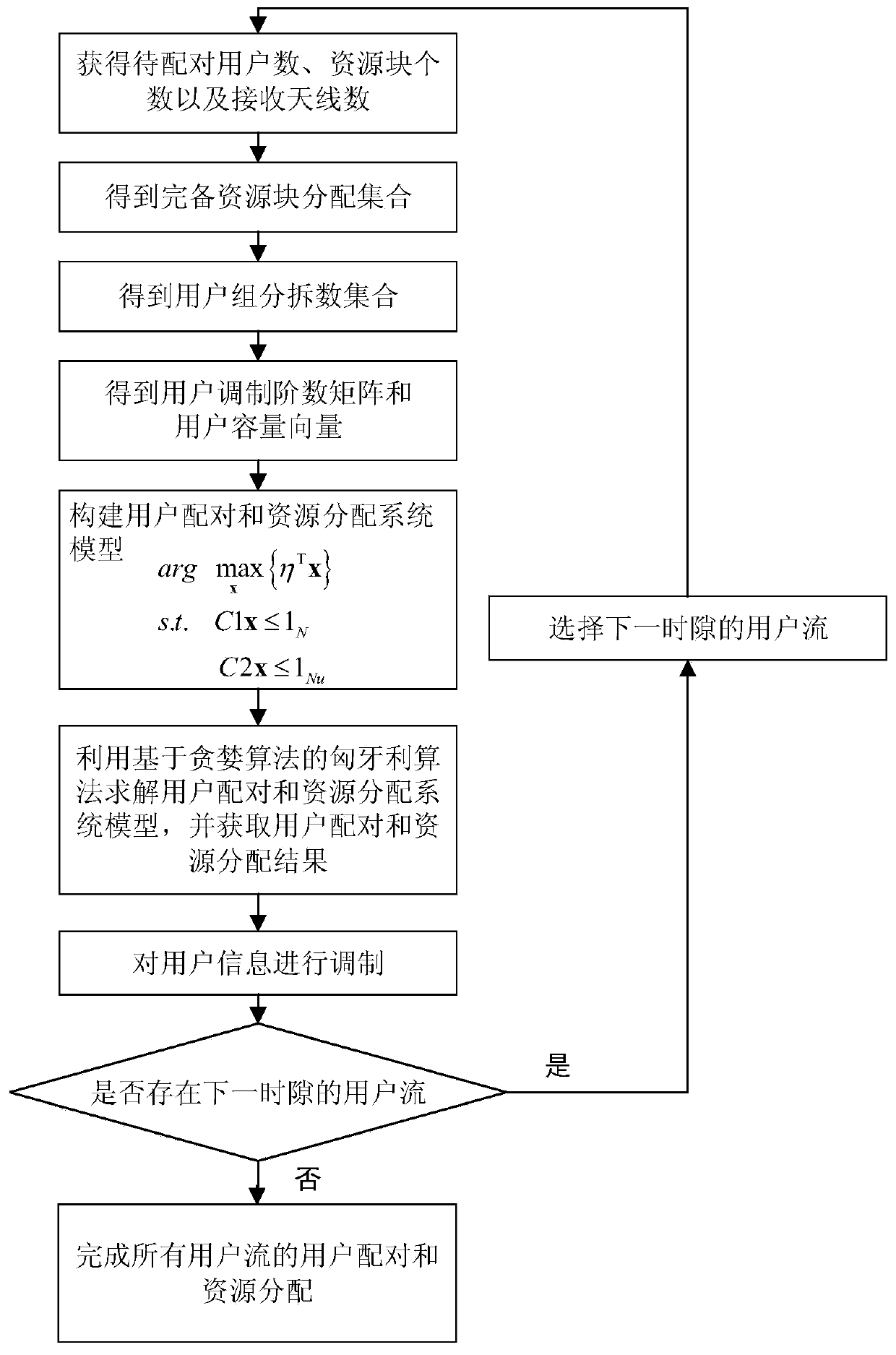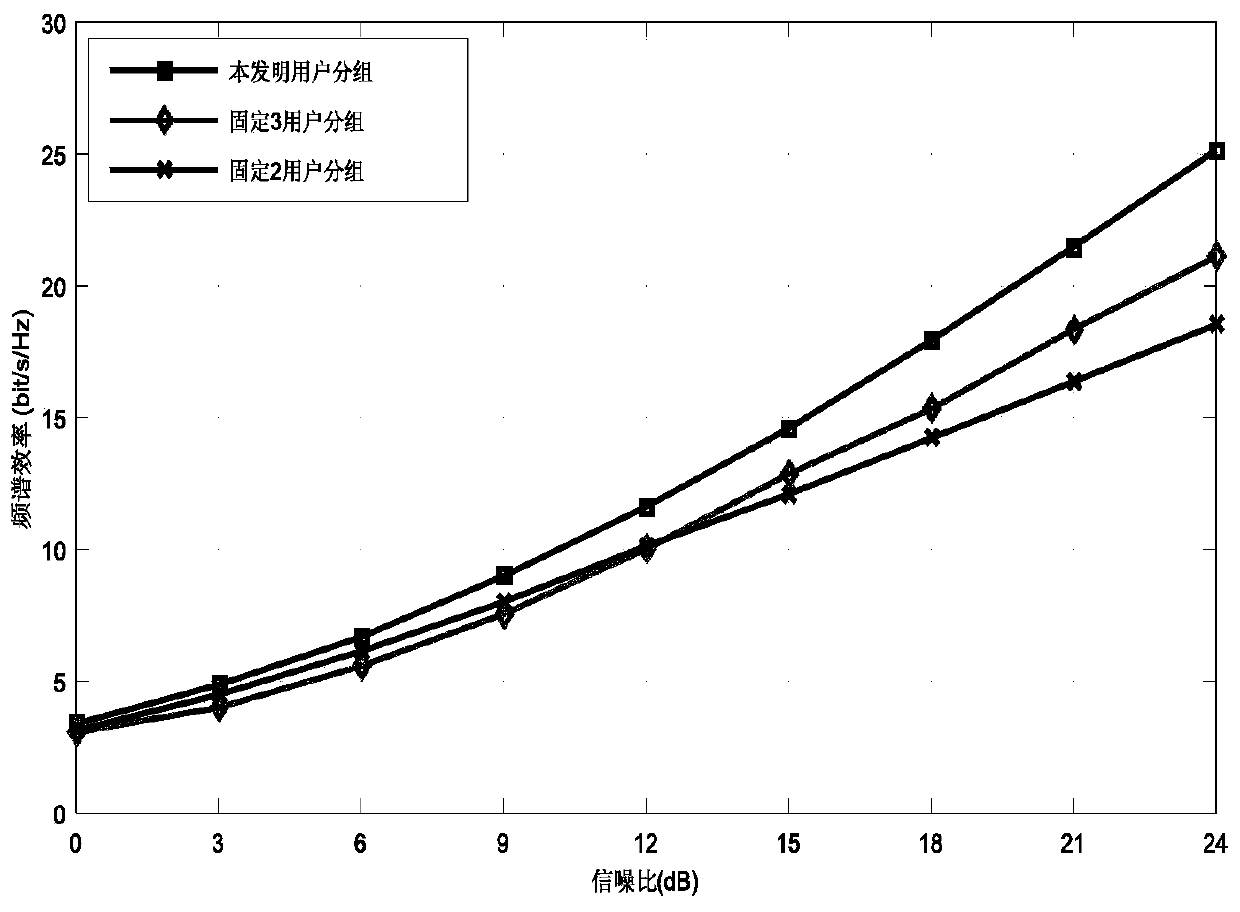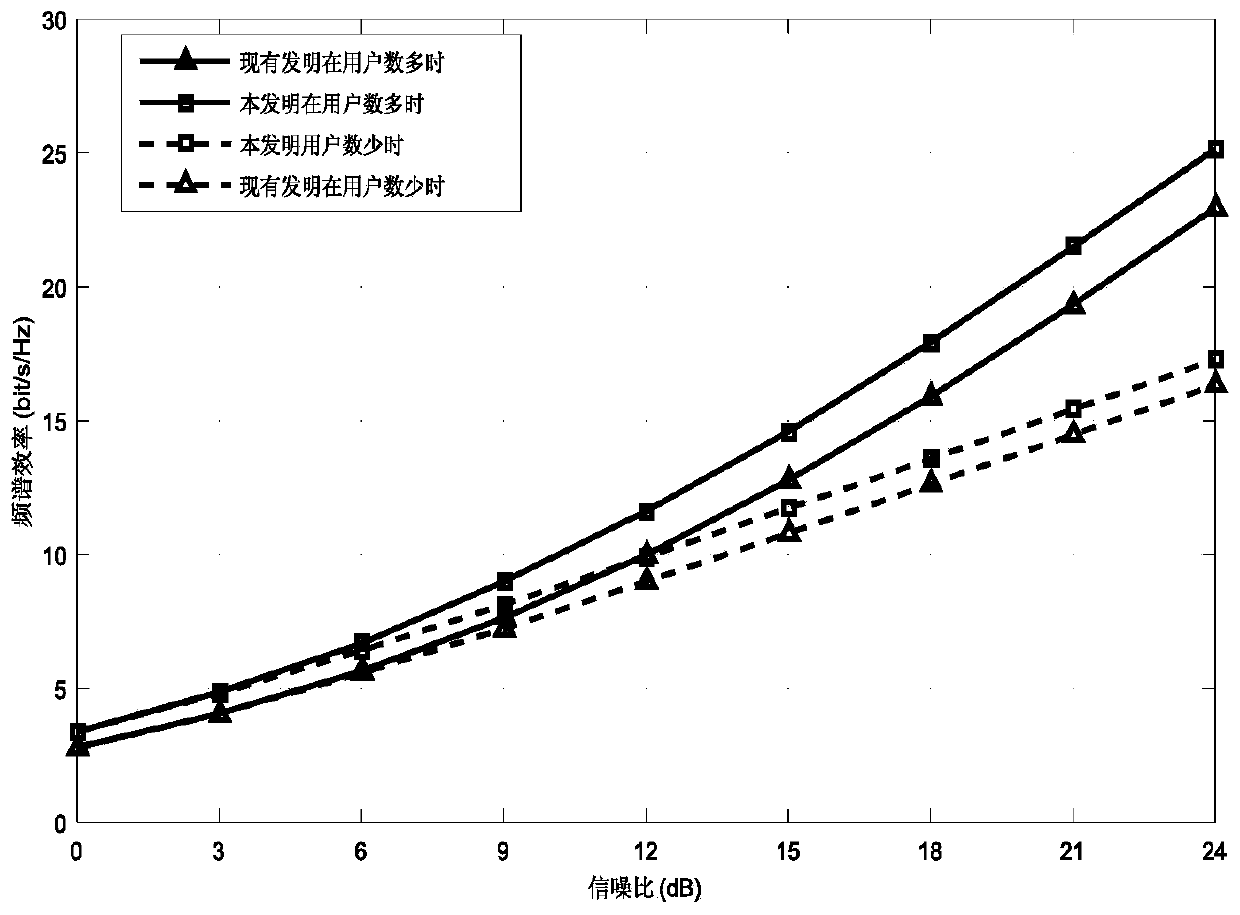Fast Joint Resource Allocation Method Based on Split Number in Virtual MIMO System
A technology of resource allocation and resource block allocation, which is applied in the field of rapid resource allocation based on the number of splits and virtual multiple-input multiple-output MIMO resource allocation. problem, achieve efficient user pairing and resource allocation, overcome the high complexity of repeated traversal, and reduce the computational complexity of the system
- Summary
- Abstract
- Description
- Claims
- Application Information
AI Technical Summary
Problems solved by technology
Method used
Image
Examples
Embodiment 1
[0042] With the increase in the number of communication users and the increasing shortage of spectrum resources, the prior art can no longer achieve more efficient use of spectrum for user selection and resource block allocation. Therefore, the present invention proposes a user pairing and splitting method based on the number of splits. Resource allocation plan. Among them, the base station is involved, and the multiple users and resource blocks associated with the base station are implemented in a virtual MIMO system.
[0043] The invention is a fast joint resource allocation method based on the number of splits in a virtual MIMO system, see figure 1 , Including the following steps,
[0044] (1) The base station obtains basic parameters
[0045] The base station obtains the set of users to be paired in the current time slot of the cell, the number of users to be paired Nu, the set of resource blocks r, the number of resource blocks N, the number of receiving antennas Nr, and so on....
Embodiment 2
[0073] The fast joint resource allocation method based on the number of splits in the virtual MIMO system is the same as that in Embodiment 1. In step (3.1), the user group split number set G is formed according to the number of users to be paired Nu, taking Nu=5 as an example, including The steps are as follows:
[0074] 3.1a) Generate an initial user integer partition matrix Q with all elements 0 0 .
[0075] 3.1b) The number of users Nu=5 is divided into integers, that is, the positive integer 5 is expressed as the sum of several positive integers, regardless of the order of their summation. Split the number of users into the result vectors (1,1,1,1,1), (2,1,1,1,0), (2,2,1,0,0), (3,1,1) ,0,0), (3,2,0,0,0), (4,1,0,0,0), (5,0,0,0,0) as a row vector into the user integer split Matrix Q 0 in.
[0076] 3.1c) Remove the zero elements in the result vector of the number of users split to obtain (1,1,1,1,1), (2,1,1,1), (2,2,1), (3,1 ,1), (3,2), (4,1), (5), get the user integer partitio...
Embodiment 3
[0085] The fast joint resource allocation method based on the number of splits in the virtual MIMO system is the same as that in the embodiment 1-2, wherein the user pairing mode matrix B generated in step (3.2) is to generate the user pairing mode matrix B according to the optional user pair set G, It includes the following steps:
[0086] 3.2a) Generate an initial user pairing pattern matrix B with Nu=5 rows, Na columns, and all elements are 0 0 , Where Na is equal to the number of elements in the user group split number set G, namely
[0087] 3.2b) Determine whether the p-th element of the user group split number set G contains a number equal to l i If yes, make the user pairing mode matrix B 0 L of i The element in the row and p-th column is equal to 1, otherwise, it is equal to 0.
[0088] 3.2c) Set the initial user pairing pattern matrix B with element values 0 As the final user pairing mode matrix B.
[0089] The above completes the user pairing mode matrix required by the pre...
PUM
 Login to View More
Login to View More Abstract
Description
Claims
Application Information
 Login to View More
Login to View More - R&D
- Intellectual Property
- Life Sciences
- Materials
- Tech Scout
- Unparalleled Data Quality
- Higher Quality Content
- 60% Fewer Hallucinations
Browse by: Latest US Patents, China's latest patents, Technical Efficacy Thesaurus, Application Domain, Technology Topic, Popular Technical Reports.
© 2025 PatSnap. All rights reserved.Legal|Privacy policy|Modern Slavery Act Transparency Statement|Sitemap|About US| Contact US: help@patsnap.com



